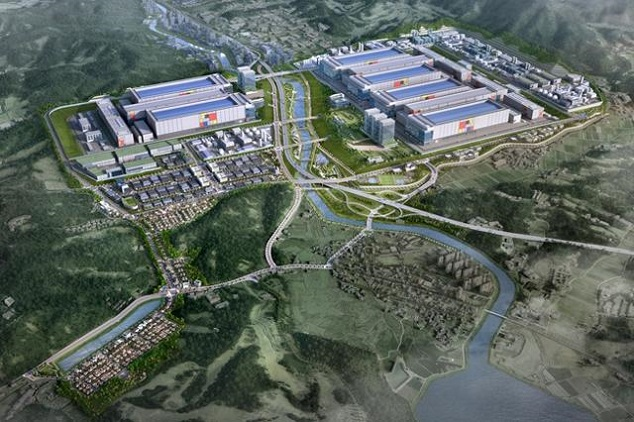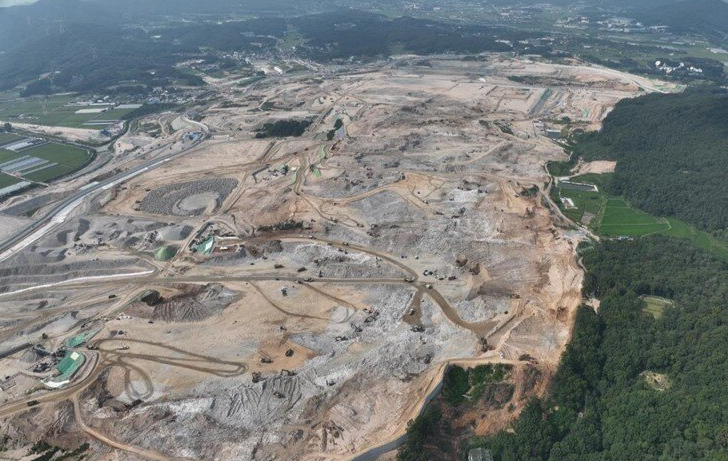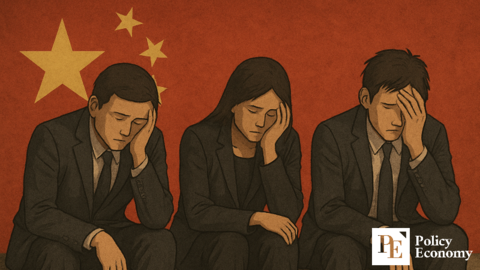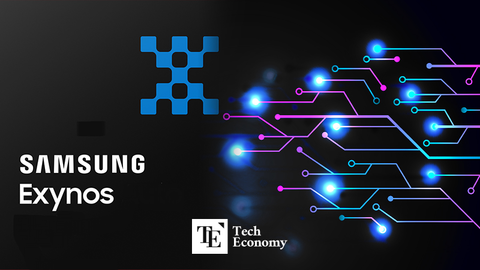Mega Public Project: Samsung Electronics' Yongin Semiconductor Complex Zones 1 and 2 to Be Tendered Simultaneously in August
Input
Modified
PQ Criteria Expected to Be Revised Project Scale Adjustments for Zones 1 and 2 Under Consideration Completion Timeline to Align with Samsung’s 2028 Production Launch

The development of the “Yongin Advanced System Semiconductor National Industrial Complex” (Yongin Semiconductor National Industrial Complex) is expected to proceed with simultaneous bidding for construction of Zones 1 and 2 in August. While the originally planned total project cost for both zones stands at approximately $1.9 billion, adjustments are highly likely during this round of bidding. The project marks the beginning of Samsung Electronics’ vision to build the world’s largest semiconductor cluster. Notably, the bid for Zone 1 has already failed twice, sparking controversy. The construction industry is closely watching how Korea Land & Housing Corporation (LH) will revise its pre-qualification (PQ) criteria for bidders.
Possible Adjustment in Scale of Zones 1 and 2
According to the construction industry on July 31, LH plans to issue simultaneous bids for Zones 1 and 2 of the Yongin Semiconductor National Industrial Complex next month. The initial plan priced Zone 1 at $1.05 billion and Zone 2 at approximately $840 million, totaling around $1.9 billion. The project will adopt the Construction Management at Risk (CMR) method, which requires top-ranking civil engineering contractors to form consortia. Under this approach, the construction management (CM) firm takes full responsibility for both design and execution, typically used for large-scale, complex developments.
The Yongin Semiconductor National Industrial Complex is divided into two segments: a “general industrial complex” led by SK Hynix, and a “national industrial complex” to be developed by Samsung Electronics. SK Hynix plans to build four fabrication plants (fabs) for next-generation DRAMs such as High Bandwidth Memory (HBM) across a 4.15 million-square-meter site in Wonsam-myeon, Cheoin-gu. Of these, one fab began construction in February and is set to begin operations in 2027. Samsung Electronics plans to sequentially build six system semiconductor production lines on a 7.28 million-square-meter site spanning Idong-eup and Namsa-eup. The total investment will reach $88 billion for SK Hynix and $260 billion for Samsung.
The government is also pushing hard to support infrastructure development. More than $1.5 billion will be invested to bolster public infrastructure. A key initiative is the “Integrated Water Supply Project,” which will draw 1.07 million tons of water daily from the Paldang and Hwacheon Dams. This volume equals the daily consumption of 3 million people in the Seoul metropolitan area. The Korea Water Resources Corporation is overseeing Phase 1 of the project, with water delivery targeted for 2031.
To ensure sufficient power, three new LNG power plants will be built, securing a total of 10 GW—equivalent to 25% of the greater Seoul area’s total power demand. Of the $1.4 billion cost for underground power transmission lines, 70% will be borne by the government, with the remaining 30% covered by the private sector. Highway networks including National Route 45 and Local Routes 82 and 84 are being expanded, and railway projects such as the Gyeonggang Line extension and the East-West Line are under consideration for inclusion in the national railway network.

Zone 1 Bidding Fails Twice
Industry observers expect that the scale of the projects for Zones 1 and 2 may be revised. However, LH appears to be leaning toward adjusting the project size rather than lowering the PQ criteria outright. A likely option involves removing relocation housing from the main project and tendering it separately or combining part of Zone 1 with the smaller-scale Zone 2. An LH official in charge of the Yongin Semiconductor National Industrial Complex stated, “We’re keeping open the possibility of a simultaneous bid for Zones 1 and 2,” adding, “We’re reviewing various re-bid formats.”
Following the dual failures in Zone 1 bidding since April, LH appears to have opted for simultaneous bidding to maintain momentum. Zone 1, considered a critical starting point of the project, initially saw participation from consortia led by Hyundai Engineering & Construction and Daewoo Engineering & Construction (including Namkwang Construction, Kukdong Engineering & Construction, Taeyoung Construction, and Jungheung Construction).
However, the Daewoo consortium failed to meet the PQ requirements and was disqualified, leaving only the Hyundai consortium, causing the bid to be nullified. The PQ stage is a pre-bid qualification process that assesses a company’s financial standing and construction capabilities. A bidder deemed unqualified at this stage cannot proceed to the main bidding round.
The exclusion of the Daewoo consortium from the second bidding round stemmed from LH maintaining the same PQ criteria as in the first round. In the initial call for bids, LH required companies to have completed site development projects totaling at least $1.05 billion over the past 10 years. If the requirement wasn’t met, the bidder’s evaluation score would be penalized. This monetary-based threshold was unusual, as performance has typically been measured by construction area. The Daewoo consortium failed to meet the financial requirement in the first round and requested relaxed standards, but LH maintained the same criteria for the second round. Daewoo eventually submitted a proposal suggesting the PQ requirement be reduced to one-third of the total project cost, instead of submitting a letter of intent.
Hyundai-Exclusive PQ Criteria Raise Fair Competition Concerns
Criticism is growing that the PQ criteria may have been excessively stringent, considering the nature of the project. Zone 1 involves standard land preparation and installation of basic infrastructure like drainage systems, pipelines, and roads—not high-difficulty tasks such as building bridges or tunnels. Yet LH demanded a single contract history equivalent to the entire project value of $1.05 billion, effectively limiting participation to only a few major firms. In fact, the Hyundai consortium is reportedly the only one that meets this requirement.
Reissuing the bid with the same criteria without any relaxation is being criticized as a violation of the fair competition principle in public procurement. In past large-scale public projects, repeated bid failures usually led to more segmented or relaxed PQ standards to attract more competition.
For instance, the $7.7 billion site development project for the new Gadeokdo Airport set separate PQ standards for airport ($600 million), port ($690 million), and bridge ($1.8 billion) construction segments. Despite involving complex tasks such as runway construction through coastal reclamation, its PQ requirements were significantly lower than those for the Yongin Semiconductor Complex. In other LH projects like the Guri Galmae Station Area Development, Seongnam Geumto Public Housing District, and Gyeongsan Daeim Public Housing District, evaluation was based on construction area rather than monetary value. One industry insider noted, “For less demanding projects like industrial complex development, PQ evaluations have generally been based on area,” adding, “In bidding for roads, railways, and other social infrastructure, it’s common to broaden eligibility to encourage competition.”





















